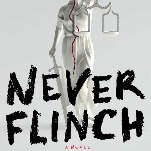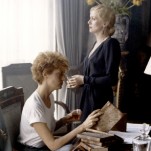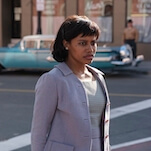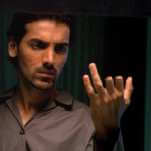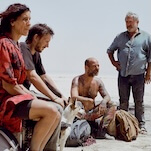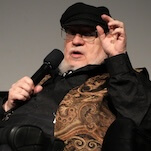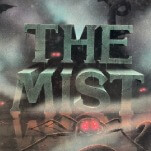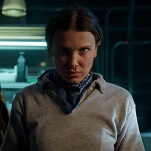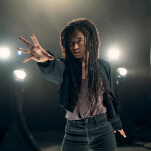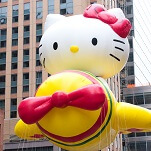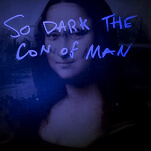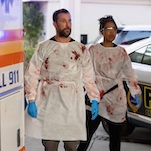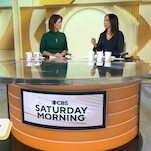But instead of filling the remaining run time with the Tim Burton-esque animation and chilling archival footage promised in promos for the series, the majority of each episode consists of uninspired reenactments full of expository dialogue explaining the thought process behind decisions like digging up your dead daughter and turning her ashes into a tonic for your ailing son to drink. The idea of otherwise reasonable people doing irrational things out of fear is certainly an intriguing one. But surely there must be better ways to convey that than inert dialogue scenes between a desperate family member and a scientifically minded acquaintance, a narrative device that appears twice in the first three episodes of the show.
The scenario described above comes from the first and weakest of the three episodes of Lore provided for review, “They Made A Tonic.” The episode dramatizes one of Mahnke’s favorite yarns—the story is also retold in Mahnke’s new book, The World Of Lore: Monstrous Creatures—that of Mercy Brown, the “first American vampire” whose corpse was dug up in 1882 in an attempt to stop the mystery illness that was consuming her family. The animated intro to the episode, about the Victorian fear of being buried alive, promises something spooky, but the flat dramatic teleplay that follows is marred by lackluster performances and basic-cable production values. (The supernatural sequences resemble those on a Discovery Channel ghost-hunting show, which dilutes their horrific power.)
The second episode, “Echoes,” strikes a better balance, mixing in interesting digressions about Rosemary Kennedy and the invention of Thorazine with squirm-inducing reenactments of Dr. Walter Freeman, the “father of the icepick lobotomy,” in action. (One way Lore does distinguish itself from its terrestrial TV counterparts is by amping up the gore.) The third episode, “Black Stockings,” has the strongest thematic through-line of the three, likening the Irish folk belief in changelings to the fear of women’s growing social and economic power in the 19th century through the story of Bridget Cleary, a woman tortured by her husband after he begins to suspect that she’s been replaced by a fairy.
All three episodes devote significant time to the battle between rational thought and ancient superstition, which may actually be a selling point for the show for some viewers. But if you’re looking for a deeper dive into the ancient superstitions themselves—where they came from, how they manifested in wider ways beyond the self-contained stories on Mahnke’s podcast, and now, the show—you may find Lore to be disappointingly light on actual folklore. Adapting podcasts for TV is an admittedly new and difficult challenge, but hopefully the next show to attempt it takes advantage of the lack of precedent and tries something a little more novel.


